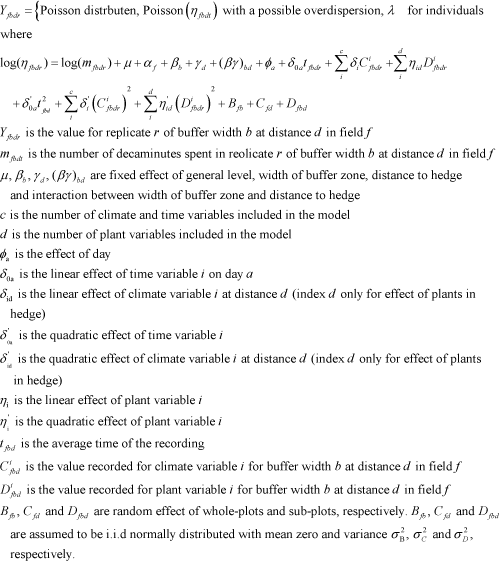Buffer zones for biodiversity of plants and arthropods: is there a compromise on width?
Model 11 Generalised linear mixed model for comparing width of buffer zones and distances after adjusting for climate variables and number of host plants and flowering plants (weeds). The model include the effect of field, width of buffers and distance from hedge as well as the 2-way interactions between width of buffers and distance from hedge as fixed effects. In addition the effect of time and climate variables, the number of plants (flowering plants in field and hedge and host plants in field and hedge) was included as covariates. The effect of number of plants in the field was included both as a linear and quadratic effect. The effect of number of plants in hedge was included similarly, but here the effect was allowed to depend on the distance to hedge. For both the number of flowering plants and host plants, which was recorded in frames in each plots, the average value per plot were used for each of the transects as it was not possible to pair frames and the transects in the field. The type of flowering plants and host plants used in the analyses was based on literature knowledge. The effect of both types of whole-plot, sub-plots and residual are includes as random effects.

Version 1.0 November 2009, © Danish Environmental Protection Agency